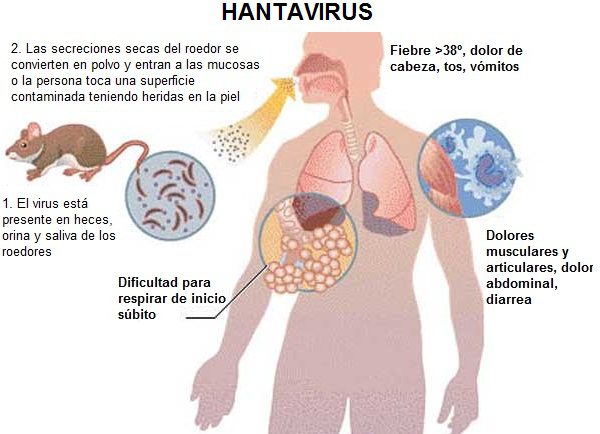The Ebola virus may be spreading terror, but it is not the deadliest virus in the world. The same goes for HIV, as the most fearsome “killer” for humanity is a virus that is a relative of Ebola.
Top 18 Most Dangerous Viruses in the World
- 1. Marburg Virus
- 2. Ebola Virus
- 3. Hanta Virus
- 4. Avian Influenza Virus
- 5. Lassa Virus
- 6. Junin Virus
- 7. Crimean-Congo Hemorrhagic Fever Virus
- 8. Machupo Virus
- 9. Kyasanur Forest Disease Virus
- 10. Dengue Virus
- 11. Rift Valley Fever Virus
- 12. Nipah Virus
- 13. Crimean-Congo Hemorrhagic Fever Virus (CCHF)
- 14. HIV
- 15. Rabies Virus
- 16. Smallpox Virus
- 17. SARS-CoV-2
- 18. Rotavirus
1. Marburg Virus
The cousin of Ebola, the Marburg virus is currently considered the scariest virus for humanity. Its name is derived from a small, peaceful town by the Lahn River in Hesse, Germany, which has no connection to the disease caused by the virus. The Marburg virus is actually a hemorrhagic fever virus.
The Marburg virus is transmitted through contact, primarily from individuals who come into contact with monkeys that have eaten fruit partially consumed by bats carrying the virus. Infected individuals will experience the virus attacking vital parts and major organs such as the liver, kidneys, lungs, intestines, reproductive organs, and salivary glands.
After invading these organs, the virus will cause severe hemorrhagic fever symptoms: convulsions and bleeding from mucous membranes, skin, and internal organs, with a mortality rate of 50-100% within just 8-10 days.

2. Ebola Virus
There are currently five strains of Ebola globally, each named after specific countries and regions in Africa: Zaire, Sudan, Tai Forest, Bundibugyo, and Reston. Among these, the Ebola Zaire strain is the deadliest, with a fatality rate of up to 90%. This strain is currently rampant in Guinea, Sierra Leone, Liberia, and Nigeria. Scientists believe that fruit bats may have carried the Ebola Zaire virus to cities in West Africa.
3. Hanta Virus

The Hanta virus is a collective name for several strains of viruses. It is named after a river where soldiers were believed to be first infected with the Hanta virus during the Korean War in 1950. Symptoms include respiratory issues, fever, and kidney failure.
4. Avian Influenza Virus
Various strains of avian influenza frequently cause panic, primarily because the mortality rate from infection in humans can reach 70%. However, the risk of contracting the H5N1 strain, one of the most well-known avian influenza strains, is relatively low. You can only become infected through direct contact with poultry and wild birds. This is considered the reason why most cases of avian influenza occur in Asia, where people often live close to chickens and ducks.
5. Lassa Virus
A nurse in Nigeria was the first person to be infected with the Lassa virus. This virus spreads through rodents. Once infected, the virus appears in their urine and enters the human body through ingestion or inhalation.
Common symptoms when infected with the Lassa virus include nausea, abdominal pain, chest tightness, followed by vomiting and bloody diarrhea.
Additionally, patients will experience internal bleeding, causing bleeding from various parts of the body, and even blindness. The victim’s heart rate will increase significantly, easily leading to cardiac arrest when exhausted.
Infections can be localized, meaning the virus attacks a specific area, such as West Africa, and can re-emerge at any time. Scientists estimate that 15% of rodents in West Africa carry the Lassa virus.
Statistics show that around 300,000 people are infected annually in Africa, with approximately 5,000 deaths each year.
Although the mortality rate is relatively low, patients often die within two weeks if not treated. Furthermore, there is currently no vaccine available to combat this disease.

6. Junin Virus
This virus is associated with Argentine hemorrhagic fever. Infected individuals will experience tissue inflammation, infections, and skin bleeding. The problem is that these symptoms are so common that Junin virus disease is easily confused with other illnesses and is rarely detected early.
7. Crimean-Congo Hemorrhagic Fever Virus
The Crimean-Congo hemorrhagic fever virus is transmitted by intermediate hosts, specifically ticks. This virus is similar to the Ebola and Marburg viruses in terms of disease progression. In the early days of infection, patients will develop hemorrhagic spots on their face, mouth, and throat.
8. Machupo Virus
This virus is associated with Bolivian hemorrhagic fever. When it enters the human body, the virus causes high fever accompanied by severe bleeding. The disease progression is similar to that of the Junin virus. The virus can spread from person to person, and rodents are commonly considered the intermediate hosts.
9. Kyasanur Forest Disease Virus
Scientists discovered the KFD virus in the coastal forests of southwestern India in 1955. The virus is believed to be transmitted by ticks, but researchers find it difficult to identify any specific intermediate hosts. Bats, birds, and wild boars can all be potential intermediate hosts. Infected individuals may experience high fever, severe headaches, muscle pain, and may develop bleeding.
10. Dengue Virus
Dengue fever is a persistent threat. If planning a vacation in tropical regions, it is essential to be aware of information about dengue fever. This mosquito-borne infectious disease affects approximately 50 to 100 million people annually in popular tourist destinations like India and Thailand. The situation is even more severe for the 2 million people living in areas threatened by dengue fever.
11. Rift Valley Fever Virus
This is also one of the dangerous viruses in Africa and Arab nations.

The virus is transmitted through various pathways, all originating from a single source: infected animals that are slaughtered.
The virus spreads through the air, transmits via the respiratory route, or through people consuming infected meat or drinking milk from infected animals. Even mosquitoes contribute to the outbreak of this disease.
This virus causes the dangerous Rift Valley fever, displaying symptoms that range from mild to severe. Mild symptoms may include: fever, muscle aches, headaches, lasting for about a week.
In severe cases, patients may lose their eyesight within three weeks or suffer from severe headaches caused by brain infections—leading to confusion and even severe bleeding under the skin.
During the hemorrhagic stage, the mortality rate can reach 50%, and patients will only have about 3 days to say their goodbyes.
Even more dangerously, there is still no cure for this disease; it can only be managed by boosting the patient’s immunity. The only method to prevent Rift Valley fever is through complete vaccination.
12. Nipah Virus
This is an emerging virus capable of infecting both animals and humans, and it is transmitted by… bats.
Bats carrying the virus consume various fruits, leaving the Nipah virus on them. The virus is then directly transmitted to humans after consuming the fruit or after humans eat the meat or drink the milk of livestock that have eaten the fruit.
The Nipah virus was first identified in 1998 after an outbreak occurred in a village named Nipah (Malaysia). Some people contracted the disease after consuming the meat of an infected pig.

Once it enters the human body, the virus can cause several unexplained infectious phenomena. Patients may experience acute respiratory inflammation, and in severe cases, encephalitis leading to death.
The fatality rate of the disease caused by the Nipah virus can range from 40-70%. Currently, there is no vaccine available for either humans or animals. Treatment primarily consists of supportive care and intensive management for affected individuals.
13. Crimean-Congo Hemorrhagic Fever Virus (CCHF)
Crimean-Congo hemorrhagic fever is a disease caused by a type of RNA virus that is widely prevalent in Africa, the Balkans, the Middle East, and Asia.

The CCHF virus is transmitted from animals to humans, primarily from livestock, through bites from parasitic ticks or direct contact with infected animals.

CCHF transmission via Hyalomma marginatum ticks – parasitizing livestock
Individuals infected with the CCHF virus will experience symptoms resembling the common flu for 1-7 days, but then will show signs of mental disturbances and petechial hemorrhages in the throat. Subsequent symptoms may include nosebleeds, vomiting, and black stools.
However, if not treated properly, the patient typically “progresses” within 7-14 days. The mortality rate for CCHF is approximately 30%.
14. Human Immunodeficiency Virus (HIV)
In the modern world, HIV may be the most dangerous virus. Dr. Amesh Adalja, an infectious disease specialist and spokesperson for the Infectious Diseases Society of America, stated: “HIV remains the largest killer in history.”
It is estimated that around 32 million people have died from HIV since the disease was first identified in the early 1980s. Dr. Adalja emphasized: “The infectious disease that has caused the most significant damage to humanity today is HIV.”
Powerful antiretroviral medications have enabled HIV-positive individuals to live many years without progressing to AIDS. Nevertheless, the disease continues to devastate many low- and middle-income countries, with 95% of new HIV infections occurring in these areas.
Statistics from the WHO in the African region indicate that nearly one in 25 adults is HIV-positive, accounting for more than two-thirds of all patients globally. In 2020, there were 680,000 HIV-related deaths worldwide.
15. Rabies Virus
Since 1920, vaccines for rabies in pets have been developed, nearly eliminating the disease in developed countries. However, rabies remains a serious issue in India and some areas of Africa.
The rabies virus is transmitted when an infected animal scratches or bites a new host. Individuals with rabies will suffer brain and nerve damage. According to the U.S. National Health Service (NHS), once symptoms appear, the chance of survival is nearly zero.
“It destroys the brain. This is a very dangerous disease. However, we have rabies vaccines and antibodies against the rabies virus. Therefore, if someone is bitten by an animal, we can treat them immediately,” said Associate Professor Muhlberger. Nevertheless, without treatment, 100% of infected individuals will die.
16. Smallpox Virus
In 1980, the World Health Assembly declared that the world was free of smallpox. However, before that, humanity had to battle this disease for thousands of years. According to the BBC, this disease claimed the lives of one-third of those infected, leaving survivors with deep scars and permanent blindness.
In regions outside of Europe, the mortality rate was even higher. For example, historians estimate that smallpox killed 90% of the indigenous population of the Americas. The BBC reports that in the 20th century alone, smallpox caused 300 million deaths.
Dr. Adalja remarked: “That virus has caused the greatest burden on the world. Not only death, but patients will suffer permanent blindness. That has driven us to eradicate this disease from the Earth.”
17. SARS-CoV-2

Electron microscope image of SARS-CoV-2 in a patient in the U.S. (Photo: NIAID-RML).
SARS-CoV-2 is the primary agent responsible for the deadly COVID-19 pandemic. According to WHO statistics, as of February 4, there have been over 774 million confirmed cases of COVID-19 globally. More than 7 million of those have resulted in death.
SARS-CoV-2 belongs to the same large virus family as SARS-CoV, known as coronaviruses, first identified in December 2019 in Wuhan, China. According to a 2021 study published in the journal Nature, this virus may have originated from bats and was transmitted through an intermediate animal before infecting humans.
According to WHO, this virus poses a higher risk to individuals with chronic conditions such as diabetes, high blood pressure, or obesity. Common symptoms include fever, cough, loss of taste or smell, shortness of breath, chest pain, and loss of mobility.
18. Rotavirus

Rotavirus is a leading cause of death in children due to diarrhea. (Photo: CDC).
According to the Prevent Rotavirus Association, rotavirus is a diarrhea-causing virus that kills 200,000 children each year, primarily in Nigeria and India.
WHO estimates that there are over 25 million outpatient visits and 2 million hospitalizations annually due to rotavirus infections worldwide.
Currently, there are two types of vaccines available to protect children from rotavirus, a leading cause of severe diarrhea in infants and young children. Countries that have implemented this vaccine have also reported a significant decrease in hospitalizations and deaths due to rotavirus.


















































